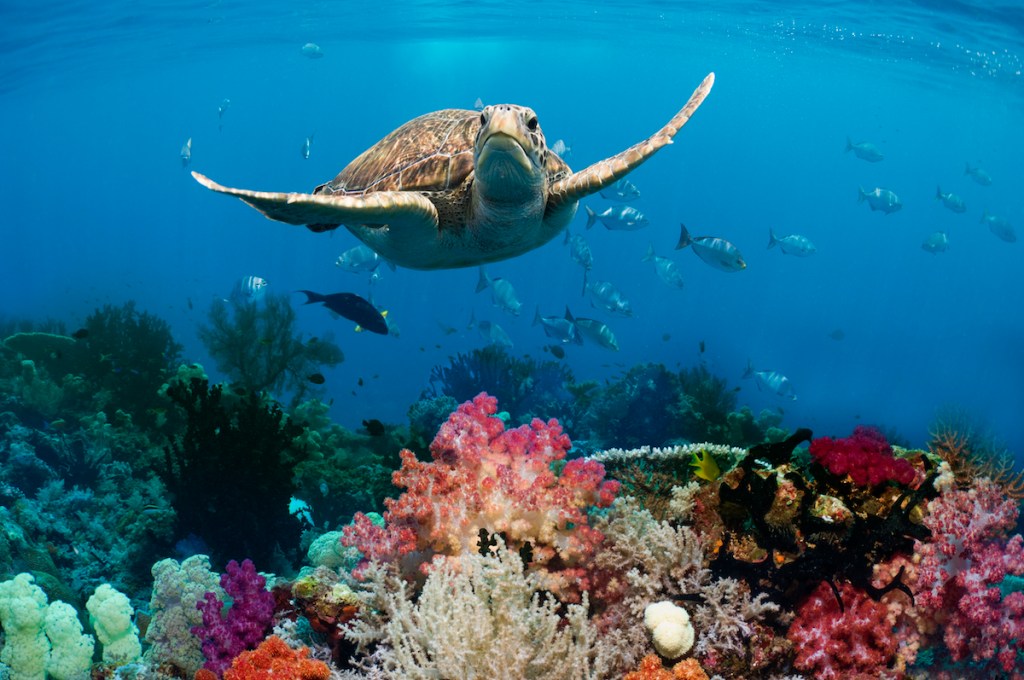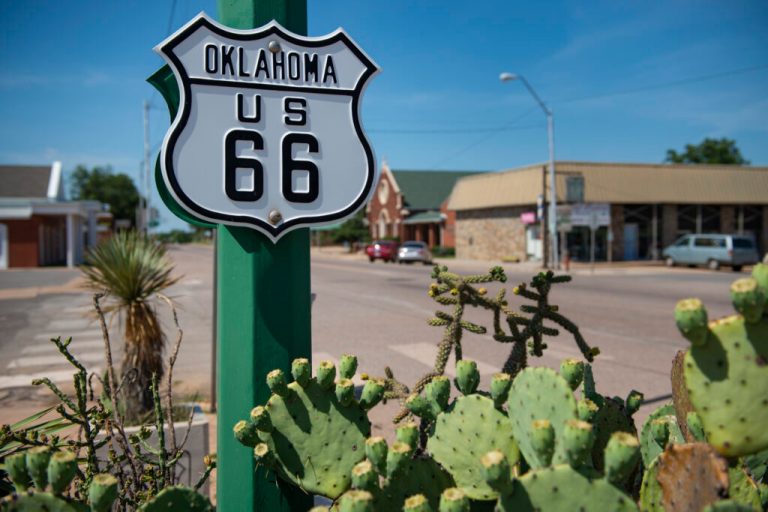In our fast-paced, ever-changing, and chaotic world, it can often feel difficult to remember something good that has happened in the past week, let alone an entire year. Nice News is here to help you remember some of the most significant positive stories from 2022 — from the endangered species that are bouncing back (looking at you humpback whales and monarch butterflies!) to the new mental health hotline and the most efficient malaria vaccine yet.
Read about those and more below; we can’t wait to see and report on all the good that happens in 2023.
1. Some Endangered and Threatened Species Bounced Back
We frequently hear about animals that are threatened by extinction, but 2022 saw a resurgence in various species — a sign that conservation efforts are working.
In January, the Xerces Society for Invertebrate Conservation announced that California’s population of monarch butterflies — an endangered species — jumped from just 2,000 in 2020 to nearly 250,000 in 2021. And way over in Australia, humpback whales were taken off the threatened species list, thanks to decades of anti-whaling protections.
The green sea turtle population is also making a comeback after hunting and egg harvesting during the 19th and 20th centuries landed them a spot on the endangered species list. But in 1968, Aldabra Atoll in the Seychelles became the first nesting site to ban turtle hunting in the Western Indian Ocean. From then to now, the breeding ground has seen a roughly 500% increase in the number of new eggs laid — and it’s expected to keep going.
2. The World Rallied Around Ukrainians
Russia invaded Ukraine in February, leading to the war that wages on today. While that’s not “nice news,” the way the rest of the world responded absolutely is. In less than two months, the country received more than 600 grants totaling nearly $900 million for humanitarian aid and relief efforts, per a report from Fortune.
Beyond the record-breaking amount of donations, various nonprofit organizations have sprung to action to feed people, find homes for refugees, help Ukraine’s pets, and more. And individuals have stepped up, too: opening their own homes — or hotels, in one case — and hearts to those affected by the conflict.

3. U.S. Wind Power Was the Second-Leading Source of Electricity for First Time
In March, energy generated by wind turbines was the second-highest source of electricity for a 24-hour period for the very first time. Wind beat out both nuclear and coal power, but fell behind natural gas, according to the Energy Information Administration (EIA).
“The amount of wind electricity generation has grown significantly in the past 30 years,” the EIA website reads, noting that “advances in wind energy technology have decreased the cost of producing electricity from wind.”
As outlined in the United Nations’ 2022 climate report, relying on wind power, as well as solar and other forms of renewable energy, will help keep global warming below 1.5 degrees Celsius and maintain a habitable and thriving planet for generations to come.
4. Scientists Sequenced the Complete Human Genome for the First Time
Scientists studying genetics reached a major achievement in March: sequencing a complete human genome for the first time. In 2003, researchers revealed what was then called a complete human genome, but it was missing about 8% of the code. This one was gap-free — and it’s a huge step forward for the study of DNA.
Eric Green, the director of the National Human Genome Research Institute (NHGRI), called the sequence “an incredible scientific achievement” that could help inform how we identify, treat, and cure human diseases. Adam Phillippy, a senior investigator at the NHGRI, compared the triumph to “putting on a new pair of glasses.” He added: “Now that we can clearly see everything, we are one step closer to understanding what it all means.”
5. World’s Largest Kindness Study Suggested the Pandemic Made People Kinder
In the world’s largest public study of kindness, released in March, two-thirds of participants said they believe the COVID-19 pandemic has made people kinder.
The Kindness Test, an online questionnaire created by researchers and psychologists at England’s University of Sussex, reached over 60,000 people from 144 countries. The questionnaire sought to understand how people experience kindness in their daily lives.
Three in four people said they received kindness from close friends or family quite often or nearly all the time. Sixteen percent of those surveyed said they had received an act of kindness within the last hour, and an additional 43% received one within the past day.
Income had no correlation with kindness, proving that acts of kindness don’t have to cost a ton of money — or any money — to have an impact.

6. World’s Largest Urban Wildlife Crossing Planned Above Busy California Freeway
In April, California broke ground on the world’s largest urban wildlife crossing, located over U.S. Route 101 near Los Angeles. The crossing will allow mountain lions, coyotes, deer, lizards, snakes, and other animals to safely cross through the Santa Monica Mountains and have better access to food, open space, and mates.
In addition to being the world’s largest, the planned bridge will be the first of its kind near a major city. Once completed in 2025, it will stretch 200 feet above 10 highway lanes. Beth Pratt, the NWF’s California executive director, said: “Crossings like this are nothing new. This one’s historic because we’re putting it over one of the busiest freeways in the world.”
7. New Malaria Vaccine With 77% Efficacy Sparked Hope Among Researchers
In 2020, there were an estimated 241 million cases of malaria around the world, 95% of which were on the African continent. But newly developed vaccines are sparking hope among researchers and locals alike. One shot was endorsed by the World Health Organization last year, and another — with remarkable efficacy rates — is on the way, researchers revealed this summer. Called R21, the second vaccine had a high-level efficacy of 77%.
“The data was being presented. And … you get goosebumps. It was absolutely extraordinary,” Mainga Hamaluba, the principal investigator on the phase III trial for R21, told The Guardian. “It still is.” Once it’s ready for public distribution, the Serum Institute of India, the world’s largest vaccine manufacturer, will be able to deliver at least 200 million doses per year. Adrian Hill, who heads a research institute at Oxford University, added that he believes the vaccine could reduce malaria deaths by 75% by 2030, and help fully eradicate it by 2040.

8. NASA’s James Webb Telescope Delivered Deepest and Sharpest Infrared Image of Space
The James Webb Space Telescope — the largest and most powerful telescope in the world — launched on December 25, 2021 and traveled nearly 1 million miles over almost 30 days to reach its permanent vantage point, a gravitationally-stable spot in space near earth opposite the sun. On July 12, the telescope’s much-anticipated first images were finally released.
The five stunning shots include a “glittering landscape of star birth” called NGC-3324 within the Carina Nebula, a stellar nursery about 7,600 light-years away. The image features what have been dubbed the “Cosmic Cliffs” for their resemblance to a mountain range but are actually the gaseous edges of a cavernous area inside the nebula. The other images are of the Southern Ring Nebula (a cloud of gas surrounding a dying star), Stephan’s Quintet (a grouping of five galaxies), WASP-96 b (a distant giant planet), and galaxy cluster SMACS 0723, which shows the faintest objects ever observed in the infrared.
“It cannot be said enough that an achievement like the James Webb Space Telescope is something bigger than any one of us. It’s bigger than any organization, than any country,” NASA scientist Michelle Thaller said at the time. “This truly takes a planet — Webb belongs to all of us and starting today, the discoveries start and are not going to stop. This is just the beginning.”
9. Mental Health Alternative to 911 Launched Nationwide — and Proved Successful
In another one of this year’s top positive stories, a new alternative for 911 — 988 — rolled out in the U.S. in July in an effort to better address mental health emergencies. “When you get on the line with someone who is trained as a professional counselor, they are able to help instill hope,” Dale Adair, chief psychiatric officer at the Pennsylvania Department of Human Services, told The Philadelphia Inquirer. “The person taking the call is able to help the person develop a safety plan.”
The hotline routes to the already existing National Suicide Prevention Lifeline, which is currently at 1-800-273-8255. Officials hope that the easier-to-remember 988 will prompt more people to reach out for help when they need it.
And it’s been working: As of September, 988 had led to a 45% increase in calls and a reduction in average response times from 2 1/2 minutes to 42 seconds, USA Today reported.

10. Parts of the Great Barrier Reef Showed Highest Coral Coverage in 36 Years
Some portions of the Great Barrier Reef — the world’s largest coral reef system — are showing the highest coral coverage in 36 years, according to an August report from the Australian Institute of Marine Science. Though the area is still threatened by climate change and warming waters, the recovery is “good news for the overall state of the [Great Barrier Reef],” the report reads.
The institute, which surveyed about two-thirds of the reef, said that one reason for the increased coverage is low levels of “acute stress” over the past year. There have been no severe cyclones and fewer outbreaks of crown-of-thorns starfish — a species that preys on coral. And while higher water temperatures have led to some coral bleaching, it has not been hot enough to kill the coral. Overall, the Great Barrier Reef has proven to be resilient and able to recover after ecosystem disturbances, a sign that continued conservation and protection efforts are as necessary as ever.
11. Ozone Layer Recovery Hit a “Significant Milestone”
The NOAA announced in September that the concentration of chemicals and substances that deplete the ozone layer had fallen more than 50%, back to the levels observed in 1980. In a press release, the organization said the latest tracking data “shows the threat to the ozone layer receding below a significant milestone in 2022.”
The ozone layer is essential, as it protects the planet and everything that lives on it from the sun’s UV rays. In the 1980s, scientists discovered that human-made chemicals were severely damaging the ozone and mobilized for change. By 1987, every single country on Earth agreed to the Montreal Protocol to regulate the harmful chemicals — the first and only time the entire world has ratified a treaty in unison.
Stephen Montzka, senior scientist for NOAA’s Global Monitoring Laboratory, noted that there’s still a ways to go in restoring the ozone layer to where it needs to be, but the milestone offers hope for a full eventual recovery. “It’s great to see this progress,” he said.
12. The Patagonia Founder Gave the Company — and His Billions — Away
For years, outdoor gear brand Patagonia has led the charge in how corporations can be part of the solution, rather than the problem, when it comes to climate change. And in September, founder Yvon Chouinard made a radical move to further that mission: donating the entire $3 billion company.
In a press release titled “Earth is now our only shareholder,” 83-year-old Chouinard wrote about realizing the efforts Patagonia was already making to combat climate change still weren’t enough, and feeling uninspired by what he saw as the available options for change — selling the company outright or going public. “Truth be told, there were no good options available. So, we created our own,” Chouinard explained.
“Instead of ‘going public,’ you could say we’re ‘going purpose.’ Instead of extracting value from nature and transforming it into wealth for investors, we’ll use the wealth Patagonia creates to protect the source of all wealth.”

13. Cheaper Hearing Aids Became Available Over the Counter
There was positive news for the hard of hearing this year: The Food and Drug Administration approved a measure that allows some hearing aids to be sold over the counter, a rule that took effect in October. Officials hope that the move will make the products cheaper, more widely available, and potentially even higher-quality.
It’s estimated that the new rule will save people around $2,800 per pair, a significant improvement for the nearly 30 million adults in the U.S. who could benefit from them.
“Today’s action will not only help adults who have perceived mild to moderate hearing loss gain access to more affordable and innovative production options, but we expect that it will unleash the power of American industry to improve the technology in a way that it will impact the enormous burden of disability from hearing loss affecting the world,” FDA Commissioner Dr. Robert Califf said at a news briefing.











